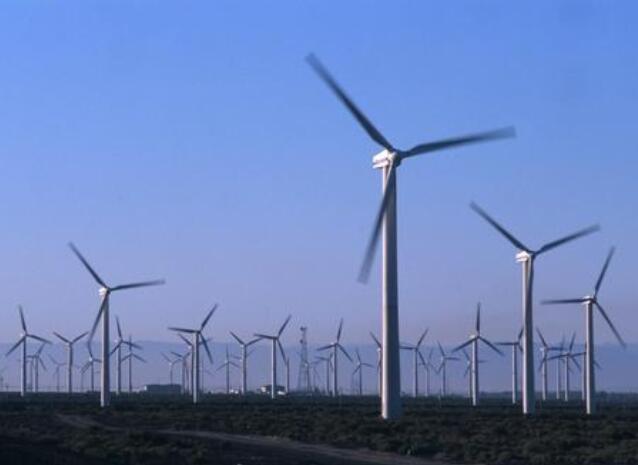Contact Us
顺辉自控阀门有限公司
咨询电话:0577-67975115
图文传真:0577-67975117
手机:13758735581
联系人:潘经理
E-mail:1906676883@qq.com
地 址:浙江省永嘉县江北街道码道工业区62号.

扫一扫 咨询沟通
据伍德麦肯最新展望报告显示,2021年石油市场和炼油行业的平衡取决于三个关键主题:欧佩克+产量、疫情发展和能源转型。
2020年,疫情造成了前所未有的石油需求冲击,伍德麦肯兹预计,2021年的液体总需求平均为9670万桶/天,比2020年高出630万桶/天。
该公司副总裁Ann-Louise Hittle表示:“我们的短期预测是,假设疫苗分发速度加快,到2021年,根据我们的宏观经济展望,全球GDP预计将增长5.0%,要知道,2020年全球经济萎缩了5.4%。全球液体燃料需求复苏速度和力度将取决于疫苗分发的速度和全球经济的复苏。”
在供应方面,所有的目光都将集中在欧佩克+放松产量限制的计划上。截至2021年1月,该集团将缩减200万桶/天的减产规模,至580万桶/天。但这一计划被去年12月达成的一项复杂协议打断了。该协议将在每月初决定增产,同时沙特将在2月至3月进一步额外减产。
Hittle表示:“我们预计,随着该集团在2021年第三季度达到计划的580万桶/天的限制水平,产量将从4月份开始逐步上升。但是欧佩克+的决定对市场来说是一个巨大的不确定性因素。欧佩克+能否每月都进行谈判,并继续为保持市场平衡而致力于限制产量,这在现在看来依旧存疑。2021年需要一些生产限制,但随着需求的复苏,减产协议遵守率可能会减弱。”
Hittle预测,到2021年,美国的产量将减少约50万桶/天,比2020年的降幅要小。钻井活动预计将继续增加,但采收率在很大程度上取决于油价和石油行业是否愿意再次增加产量。
尽管今年全球原油产量有复苏希望,但炼油行业仍在继续应对疫情、欧佩克+减产和新增产能带来的挑战。
此外,尽管预计需求将强劲增长,但2021年炼油厂的利用率仍将保持较低水平,因此炼厂面临的威胁仍然存在。今年,中东和亚洲的炼油产能将超过100万桶/天,这些新增产能是否会推动欧洲和亚洲石油市场进一步恢复正常,仍有待观察。
副总裁艾伦 盖尔德(Alan Gelder)表示:“2020年,石油产品库存激增,鉴于航空油料需求崩溃,尤其是中间馏分油的库存激增,高企的产品库存减缓定价的复苏,库存能否恢复到疫情爆发前的水平,仍无法预料。需求的快速复苏可能导致馏分油价格疲软,因为汽油需求将决定炼油业务。不同产品之间需求的相对复苏值得关注。然而,原油产量的任何实质性增长都将削弱高硫燃料油的价格,因为目前的高价格反映出市场供应有限。”
今年年初,石化一体化和低运费改变了全球柴油价格走势,压低了欧洲的价格、炼油业务和利润率。由于亚洲炼油商的高速运转,欧洲的原油价格目前低于新加坡。亚洲的石油需求恢复得更快,它们的综合炼油/石化工厂正实现颇具吸引力的利润率。
低成本的运费,尤其是最初用于清洁产品服务的新型超大型油轮,使亚洲柴油得以长途出口到欧洲。这清理了当地市场,支持了当地价格,但在欧洲建立了库存,从而促进了“反向套利”流动,届时柴油将从欧洲运往纽约港。
Gelder补充道:“关键是要关注新建大型油轮的完工、欧洲柴油需求的复苏、浮式库存的减少,以及欧洲柴油强势定价的回归。关键的问题是,需求的复苏何时会导致更多的欧佩克+原油出口,从而使这些新的超大型油轮进入原油服务市场,并推高运费。”
今年炼油行业最热门的话题之一是液态可再生能源。能源转型以及许多综合性石油公司实现碳中和的愿望,给面临关闭威胁的炼油厂带来了一些希望。
Gelder表示:“炼油厂的传统关闭路线是将其转化为终端,从而在液体燃料分销基础设施中保留一席之地。现在,我们有机会重新利用这些设施来生产液态可再生能源。加州的低碳燃料标准支持这种转化,以生产可再生柴油,吸引来自世界各地的资源,而不仅仅是美国。原料的选择是关键,因为首选原料(如废弃食用油)的可用性有限。亚洲国家支持生物柴油生产和使用的重大政策举措可能会对欧洲等其他地区带来重大影响,因此需要密切关注。”

王佳晶 摘译自 伍德麦肯兹官网
原文如下:
OPEC+, Covid-19 and energy transition – 3 themes impacting oil markets and refining in 2021
Wood Mackenzie’s latest outlook report shows that the art of balancing oil markets and the refining sector in 2021 hinges upon three key themes – OPEC+ production, Covid-19 developments, and the energy transition.
Following 2020’s unprecedented oil demand shock amid the Covid-19 pandemic, Wood Mackenzie expects 2021 total liquids demand to average 96.7 million barrels per day (b/d), 6.3 million b/d higher than the 2020 annual level.
Wood Mackenzie vice president Ann-Louise Hittle said: “Our short-term forecast assumes vaccine distribution accelerating through 2021 and is underpinned by 5.0% expected growth in global GDP, according to our macroeconomic outlook, following the global economy’s 5.4% contraction last year.
“The pace and strength of the global liquids demand recovery will depend on the pace of Covid-19 vaccine distribution and global economic recovery.”
On the supply side, all eyes will be on OPEC+’s plan to ease production restraint. The group was due to ease its production restraint by 2 million b/d to 5.8 million b/d as of January 2021. But that has been waylaid by a complicated agreement made in December to bring output back in increments to be decided at the start of each month, along with the February-March additional voluntary cuts by Saudi Arabia.
Hittle said: “We are assuming output gradually rises from April as the group obtains the planned 5.8 million b/d restraint level by Q3 2021. But OPEC+ decisions are a huge uncertainty for this year. Can OPEC+ negotiate deals each month and remain committed to production restraint? Some production restraint is needed in 2021 for market balance, but compliance could wane with demand recovery.”
Over at US Lower 48, Hittle predicts that output will decline by around 500,000 b/d in 2021 on a year-on-year basis, a more moderate rate than in 2020. Rig activity is expected to continue to rise but much of the recovery rate is dependent on oil prices and the industry’s willingness to spend on volume growth again.
While there is a glimmer of hope in global crude production this year, the refining sector continues to battle challenges compounded by Covid-19, OPEC+ production cuts and new capacity additions.
Even with demand projected to increase strongly, 2021 refinery utilisation will remain low, hence the threat of refinery rationalisation remains. Over one million b/d of refining capacity will be completed in the Middle East and Asia this year; it remains to be seen if these new-build sites might prompt further rationalisation in Europe and across Asia.
Vice president Alan Gelder said: “In 2020, there was a surge in product stocks, particularly for middle distillates given the collapse in jet demand. High product stocks will slow the recovery in pricing, but will stocks return to prior levels?
“A rapid recovery in gasoline demand could lead to weak distillate prices as gasoline demand will set refining runs. The relative recovery in demand between products is important to watch. However, any material increase in crude runs will weaken the pricing of high sulphur fuel oil as its current high price reflects limited supply.”
Petrochemical integration and low freight rates changed the global pricing dynamics for diesel at the start of this year, depressing European prices, refining runs and margins. European prices are now below those of Singapore as Asian refiners are running at high rates. Oil demand in Asia has recovered faster and their integrated refinery/petrochemical sites are achieving attractive margins.
Low-cost freight, particularly on new VLCCs used initially in clean product service, is enabling Asian diesel to be exported long haul to Europe. This clears the local market, and supports local prices, but builds stocks in Europe, which then facilitates “reverse arb” flows, as the diesel is then moved from Europe to New York harbour.
Gelder added: “Key to watch is the completion of new-build VLCCs, European diesel demand recovery and the draw-down of floating stocks, along with increasing freight rates as to when diesel pricing strength returns to Europe. The critical question is when does the recovery in demand lead to more OPEC+ crude exports so these new VLCCs go into crude service and freight rates are pushed higher.”
One of the hottest topics in the refining sector this year is liquid renewables. The energy transition and the aspirations of many integrated oil companies to achieve carbon neutrality offers some hope to refineries under threat of closure.
Gelder said: “The traditional closure route for a refinery is conversion into a terminal, so retaining a role in the distribution infrastructure for liquid fuels. Now, there is the opportunity to repurpose these facilities to also produce liquid renewables.
“California’s Low Carbon Fuels Standard is supporting such conversion to produce renewable diesel, pulling in materials from all over the world, not just the US. Feedstock selection is key, as the availability of preferred feedstocks, such as used cooking oil, is limited. Material policy moves by Asian countries to support local biodiesel production and use could be disruptive to other regions, such as Europe, so is something to watch out for.”